- Rent, Lease, or Purchase
- |
February 4, 2020
40-foot Container Dimensions - Complete Guide
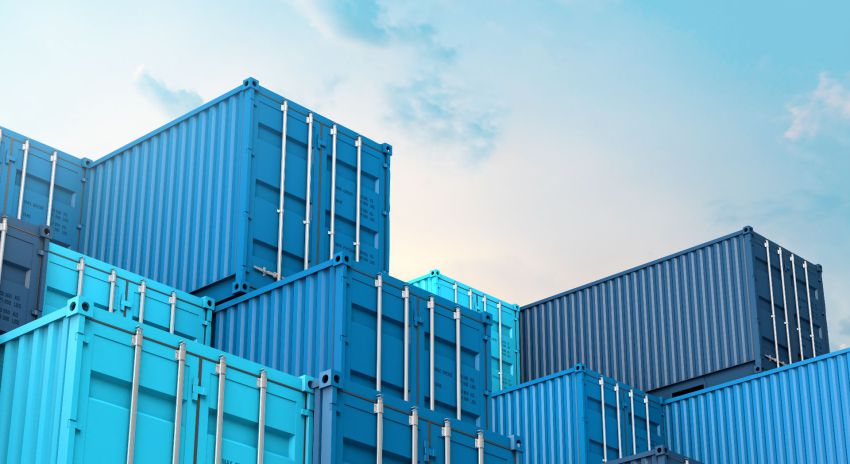
Forty-foot shipping containers are large, multipurpose units that offer an extensive storage capacity. The total cubic capacity of a 40-foot container is about 67 CBM, which means you will enjoy a loadable volume of 55-58 CBM.
What exactly does loadable volume mean? How does it differ from shipping container dimensions? How do you calculate the CBM of a 40-foot shipping container? Read on below to find out.
40' Shipping Container Dimensions
Typically, there are two types of shipping containers that find applications in various industries:
Standard Containers
All standard ISO containers have similar width and height, the only difference revolves around their length.
With that, we can conclude ISO-size refers to the external length of the container. For instance, a 40-foot shipping container means that the container's length is 40 feet.
Depending on the thickness of steel in its construction, there can be a slight variation in the internal width, internal length, and internal height.
High-Cube Containers
High-cube shipping containers are taller than standard shipping containers, allowing you to store taller cargo.
We've compared the dimensions of 40-foot standard containers and high-cube containers in the following:
Feet and Meters
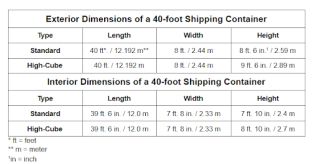
Inches
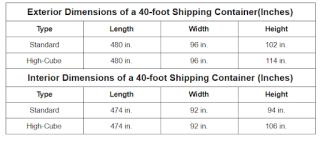
Centimeters and Millimeters
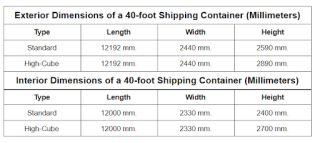
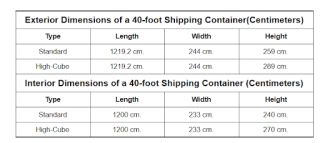
Weight and Volume of 40ft Shipping Containers in Lbs., Kgs., and Tons
Another essential consideration while buying or renting a 40-foot shipping container is calculating the container's payload capacity and loadable volume. The container tare weight refers to its weight itself, while the payload is its cargo-carrying capacity.
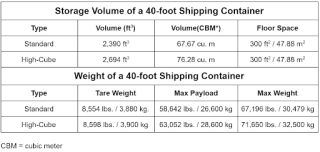
Read our comprehensive guide to learn more about shipping container weight.
How Much Can I Fit in a 40-foot Standard Container and 40-foot High-Cube Container?
High-cubes are special purpose units that help you carry more cargo. The exterior dimensions of a 40-foot standard container and a 40-foot high cube are the same, except for the height. The additional size helps increase the tare weight, maximum gross weight, and the maximum load capacity of 40 ft. high cube containers.
Since a 40-foot shipping container provides about 67 cubic meters of space, you can load boxes of goods amounting to about 55 - 58 cubic meters of volume.
Similarly, a 40 ft. high cube container with a capacity of 76 cubic meters allows you to load 60-68 cubic meters of cargo. You always lose some space when you stack boxes, depending on the stacking orientation.
The interior space that both these containers offer is ideal for storing multiple cars, heavy machinery, tools and equipment, finished goods, and even personal belongings while moving.
How Many Pallets Can Fit into 40 ft. Containers?
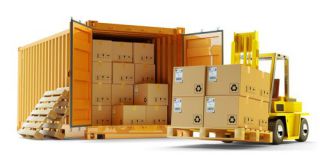
About 18 pallets (220 cm tall) or 36 pallets (110 cm tall) can fit inside the container. The American-standard pallets measure 1 m x 1.2 m, while Euro pallets are 0.8 m x 1.2 m in size.
Therefore, a 40 ft. container helps you store 20-21 American pallets and 23-24 Euro pallets. High-cubes have about 9 CBM extra volume; therefore, if you're vertically stacking cargo in a 40 ft. high cube, you can fit more pallets.
However, the storage capacity of a steel container also depends on the loading configuration, nature of goods, transport distance, and ease of access.
How Many CBM is a 40-foot Shipping Container?
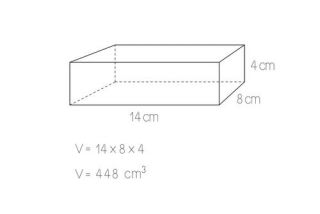
CBM is the abbreviation for cubic meters; the unit for the storage volume of the container. Here's how you can calculate the CBM:
- Measure the internal width, length, and height of the container.
- Convert these dimensions into meters, if necessary.
- Use the formula, Volume(CBM) = Internal (Length x Width x Height)
Let's use a 40 ft. high cube container as an example. The container's interior length, width, and breadth are 39 ft. 6 in. x 7 ft. 8 in. x 8 ft. 10 in. Converting these dimensions from feet and inches to meters, we get CBM = 12.0 m x 2.33 m x 2.7 m = 76 m3
What Types of 40-foot Shipping Containers Can I Purchase?
A 40-foot container offers a secure, wind-and-water tight design ideal for transporting cargo across continents. You can buy a one-trip container or a used container as per your preferences. New containers are in better condition, but their prices can double the costs of a used container.
Besides the 40 ft. high-cube container unit, there are several other special-purpose containers you can use for niche applications. They include:
Double-Doors
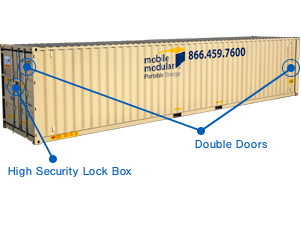
Double door containers have an opening on either end of the container to help you load and unload heavy cargo quickly.
Flat Rack Container
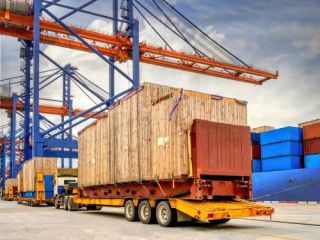
Flat rack containers or flat racks have no side doors and walls. You can conveniently mount these containers from the top and the side, making them the perfect solution for shipping heavy goods and oversized items.
Vented Containers
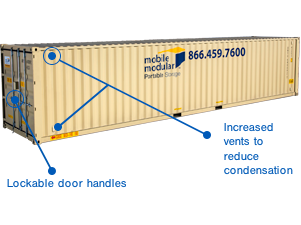
Ventilated containers have a unique construction that prevents condensation and moisture build-up. These containers are perfect for shipping a wide variety of goods that may be affected by moisture.
Conclusion
A 40 ft. container is one of the most efficient solutions for storing large-size goods. Determining the dimensions and storage capacity of the container can help you decide whether the container meets your application.
If a standard 40-foot container doesn’t work out, you can also invest in other container types like a 40 ft. high-cube or flat-rack container.
Mobile Modular Portable is the leading supplier of high-quality shipping containers for rent.
Contact us today at 866-459-7600 or get in touch with us to know more about our container solutions near you.
Related Blogs
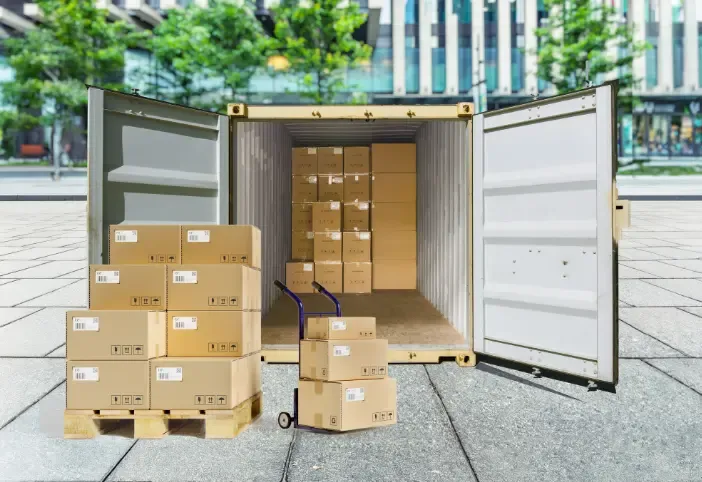
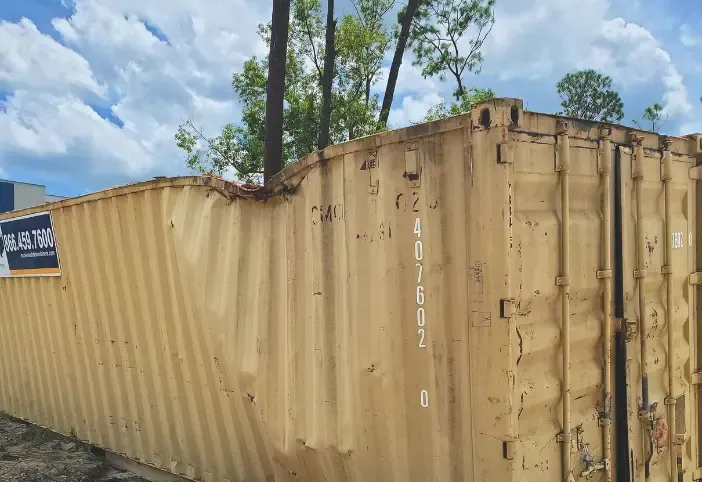
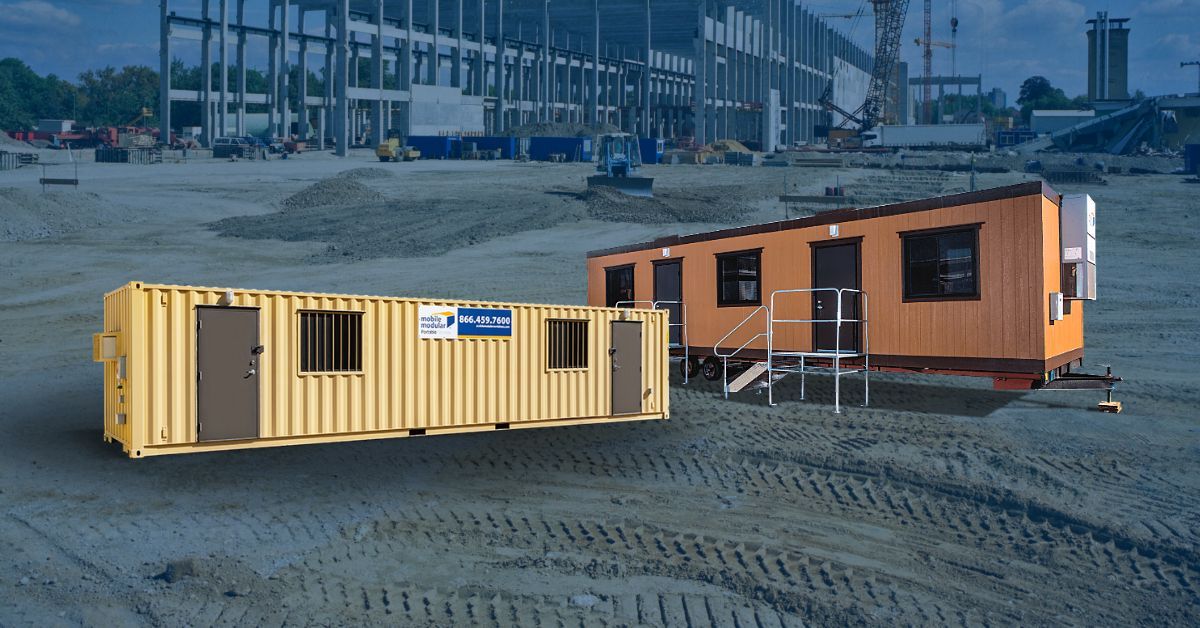
Subscribe to Our Blog
Enter your email address to subscribe to the blog and receive the notification of new posts by email.
Thank You for Subscribing to Our Blog!
Stay tuned for upcoming emails with valuable content that we hope will enhance your experience with our brand.
Both Pardot and mg360 form submissions failed.
